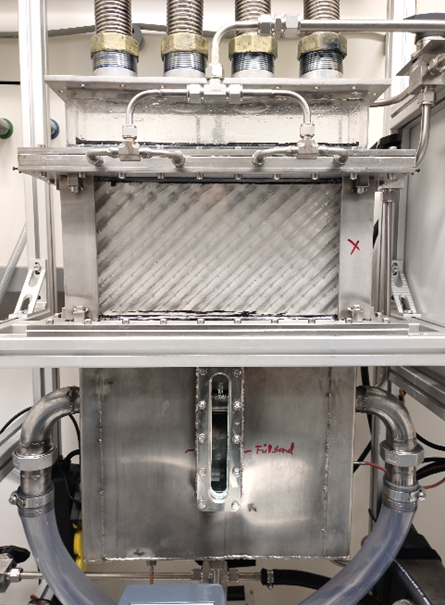(79f) Influence of Design Characteristics of Structured Packings on the Foam Formation in Columns
AIChE Spring Meeting and Global Congress on Process Safety
2021
2021 AIChE Virtual Spring Meeting and 17th Global Congress on Process Safety
Topical 8: Kister Distillation Symposium
Kister Distillation Symposium 2021: Legacy of Neil Yeoman: Innovation in and Better Operation of Trays and Packings & Mentoring the New Generation of Distillation Engineers
Wednesday, April 21, 2021 - 12:05pm to 12:35pm
Influence
of design characteristics of structured packings on the foam formation in
columns
Hannes
Leuner,
Sören J. Gerke, Jens-Uwe Repke, Technische Universität Berlin, Process Dynamics
and Operations Group, Berlin/Germany
Foam
in distillation and absorption columns is one of the main reasons for process
malfunctions in the chemical industry (Kister, 2003). Disturbing foam in
columns usually leads to higher gas pressure loss, lower gas throughput, lower
mass transfer rates and therefore a reduced separation efficiency that can make
a shutdown necessary (Thiele et al., 2003). Foam is caused by surface-active
substances which are either unavoidable or often unwanted, unknown and a result
from contamination or conversion of participating substances. Hence, the foam
formation in columns is a complex phenomenon with individual causes and impacts
for certain equipment and processes depending on various influence parameters
like temperature, pressure, fluid properties, design characteristics of the
equipment and until now neither completely understood nor fully controllable
(Leuner et al., 2020).
To
further understand foam formation and develop concepts of design and operation
to sufficiently inhibit and destruct foam in structured packing columns, the
influence of design characteristics of structured packings on the foam
formation in columns has been investigated in this work. Thereby, the influence
of the microstructure of the packing material, the contact angle and the junction
between packing layers of structured packings was analyzed and discussed with already
published findings. The aim of the study is to identify foam inhibiting design characteristics
of structured packings to derive recommendations for future design and
operation of foam affected distillation and absorption processes.
The
experimental investigations were conducted with Sulzer Mellapak 350.Y in either
a DN300 glass column with a packing height of 2m (see Figure 1 left) or a customized
measurement cell made from transparent moldings of the structured packing
sheets (see Figure 1 right). The foam formation has been qualitatively and
quantitively analyzed using optical measurement methods like Light Induced
Fluorescence in combination with a high-speed camera along with the gained datasets
of gas pressure loss and gas flow rate across the structured packing. Within
this study the foam formation of Butanol/Water- and Monoethanolamine/Water-mixtures
have been investigated.
|
Figure 1: Experimental set-ups to investigate foam formation in structured packings (1) DN300-glass columns with structured packing. (2) Measurement cell with transparent moldings. |
|
Current
results indicate a lower foam impact on low liquid loads in structured packings
with smooth surfaces due to a decreased liquid accumulation at contact points
between packings sheets. For higher liquid loads, structured packings with a
corrugated surface tend to be less affected by foam formation due to an enhanced
liquid distribution across the structured packing. However, hydrophobic
surfaces with contact angles above 90° are in all cases more affected by foam
formation than hydrophilic surfaces with contact angles below 90°.
last 50 years? Chemical
Engineering Research and Design, 81(1),
5-26. Leuner, H., Gerstenberg, C., Lechner, K., McHardy, C., Rauh,
C., & Repke, J. U. (2020). Overcoming
unwanted foam in industrial processes of the chemical and food industry – an
ongoing survey. Chemical
Engineering Research and Design, 163, 281-294.
Thiele, R., Brettschneider, O., Repke, J. U., Thielert, H.,
& Wozny, G. (2003). Experimental investigations of foaming in a packed
tower for sour water stripping. Industrial & engineering chemistry research, 42(7), 1426-1432.



